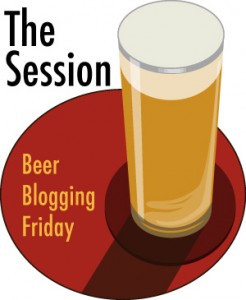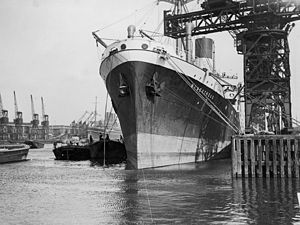
This month the Pittsburgh Beer Snob is leading the Session and here is the topic for July….
“I love history. There’s just something about it. It’s fun. It’s interesting. It even gives me goosebumps. So, I only saw it to be fitting that I choose the topic of Beer in History.
Even better is the fact that the summer time is the main period of the calendar year that I absolutely delve into history. We just passed the 70th anniversary of the Invasion of Normandy (Many of you know it as D-Day or Operation Overlord). The latter portions of June mark the beginning of the Gettysburg campaign which culminates on July 3. The following date is obviously the Fourth of July here in the states.
At many points in history you can look back and find alcohol intertwined. A lot of times that form of alcohol is beer. Beer is something that connects us with the past, our forefathers as well as some of our ancestors. I want this topic to be a really open-ended one. So, it should be fairly easy to come up with something and participate.”
Beer is embedded into history of all kinds, science with Pasteur, technology with modern behemoth breweries, women in the workforce with ale wives. Monks aplenty as well. And now as craft beer reaches 25 and 30 years of age in some breweries, there is a spate of books about how craft came to be. Recent history, as it were.
But I want to talk about metal. Not the music. More specifically aluminum. It is why the industrial water lagers became so ubiquitous and it is also powering a growing trend in craft brewers who put most of their beer in cans. It has bridged two competing interests in history.
This metal was first identified in the 1780’s and took awhile to become used commonly because getting it out of the ground proved hard to do and too costly to do until advancements in the 19th century made aluminum cheaper to be made and easier as well. Thus the price for it fell and more people could use it.
Even with that change, it wasn’t the metal of choice until after World War II (I know that World War I is chic right now but let’s talk WW2). Steel cans were sometimes used but bottles were the first choice for price and because that is what was used. A plucky little brewery (Well, it might have been considered that then, but Coors certainly isn’t now) in 1958, filled little 7oz cans. The Hawaii Brewing Company used an all-aluminum can that year as well. The innovation still wasn’t super popular but as the cone-top cans became less popular those who stuck with aluminum through the development process were justified in sticking with it.
R&D wise you then had the steel can with aluminum top. Then the addition of the pull tab that involved a certain amount of digital dexterity which was better than the church key method of popping open a jagged opening for the beer to come out of. (Precursor to WIDE mouth openings). A man with the stylin’ name of Ermal Fraze created the first “zip top” can. Then Schlitz proudly introduced the first “pop top” can in the year 1963. Ancient for some beer fans. But if you remember a world without remote controls or answering machines, you probably remember some cans without that simple and elegant design.
The next step was to create a tab that stayed with the can to avoid a littering of tear off tabs on the ground. That finally happened in 1975.
And now nearly 100% of all beer and soda cans here in the U.S. are made fully of aluminum. Looking at that summation of hundreds of years it is really amazing to think that a metal found in the ground would become such a monopoly for holding fizzy drinks. And it is even more amazing that it took craft brewers so long to wrest control of cans back to quality beer.
Makes me want to pop open a Wolf Among Weeds from Golden Road.
Kudos to
MadeHow.com for providing the research material.








